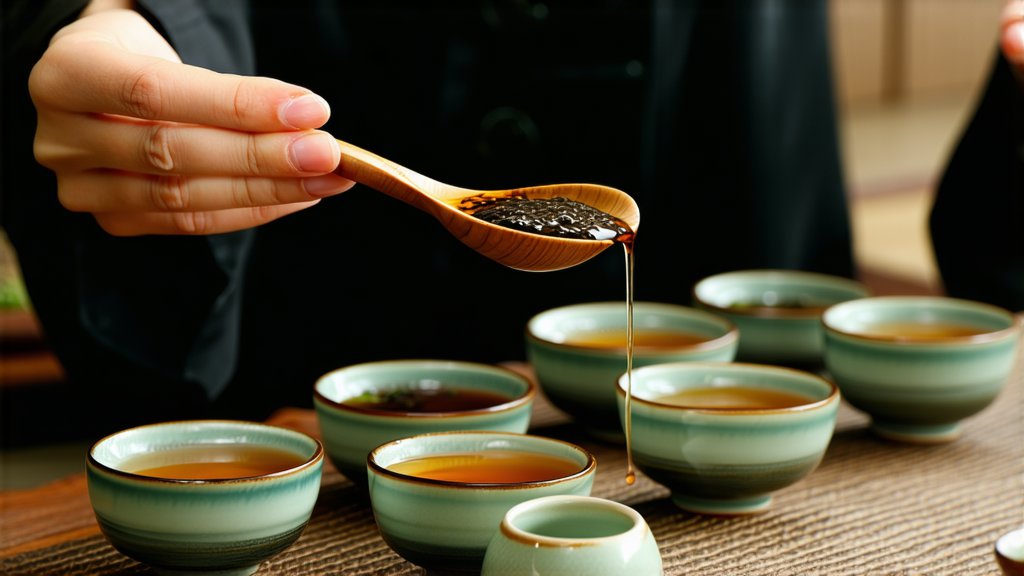
Pu-erh tea, hailing from the lush landscapes of Yunnan province in China, stands as a testament to the rich tapestry of Chinese tea culture. This unique variety of dark tea, crafted from the leaves of the Camellia sinensis plant, has captivated tea enthusiasts worldwide with its distinct flavor profile and remarkable health benefits. In this exploration, we delve into the storied past, diverse types, meticulous production methods, and the art of savoring Pu-erh tea.
A Glimpse into History
The origins of Pu-erh tea trace back over a millennium, with its name derived from the town of Pu'er in Yunnan. Historically, it was a crucial commodity along the ancient Tea Horse Road, facilitating trade between China and Tibet. Unlike other teas that were primarily consumed fresh, Pu-erh's allure lay in its ability to improve in quality over time, a characteristic that has earned it the moniker "the older, the better."
Varieties of Pu-erh Tea
Pu-erh tea comes in two principal forms: Raw (Sheng) and Ripe (Shou). Raw Pu-erh undergoes natural fermentation and aging, gradually maturing like fine wine. Its taste evolves from astringent and robust in youth to smooth and complex with age. On the other hand, Ripe Pu-erh is subjected to a controlled fermentation process known as 'wodui' or pile-fermentation, which accelerates the aging process, resulting in a mellower flavor profile even at a younger age.
The Art of Craftsmanship
The production of Pu-erh tea is a blend of tradition and precision. It begins with the careful selection of high-quality leaves, often sourced from ancient tea trees. After harvesting, the leaves undergo withering, rolling, and sun drying to reduce moisture content. For Raw Pu-erh, these leaves are then pressed into various shapes such as cakes, bricks, or tuochas (nestles), allowing them to age naturally. The process for Ripe Pu-erh includes an additional step where the leaves are piled up and left to ferment under controlled humidity and temperature conditions for several weeks to months, enhancing their maturity.
The Ritual of Tasting
Tasting Pu-erh tea is an experience that engages all senses, akin to a meditative journey. To truly appreciate its depth, one must follow a series of steps:
- Warming the Teaware: Begin by rinsing your teapot and cups with hot water to cleanse and warm them.
- Preparing the Leaves: Use a tea needle or putter to break off a small piece of the tea cake or measure loose leaves into the pot.
- Infusion: Pour hot water (around 95°C/203°F) over the leaves, starting with a short steep (about 5-10 seconds) for the first few infusions, gradually increasing the time as the leaves unfurl.
- Observing the Liquor: Admire the rich amber hue of the brewed tea, a reflection of its maturity.
- Savoring the Aroma: Inhale deeply before sipping to appreciate the nuanced fragrances—earthy, woody notes for raw, and sweet, mellow aromas for ripe Pu-erh.
- Sipping Slowly: Take small sips, allowing the tea to coat your palate, noting the initial bitterness that gives way to a lingering sweetness and a velvety texture.
- Multiple Infusions: Pu-erh tea is renowned for its ability to be infused multiple times, each brew revealing new layers of flavor.
Conclusion
Pu-erh tea embodies the essence of patience and transformation, both in its creation and consumption. As it ages, it mirrors the passage of time itself, gaining character and complexity. For those seeking a profound connection with tea history and a sensory adventure, exploring the world of Pu-erh is an invitation to embark on a journey that transcends generations and borders.